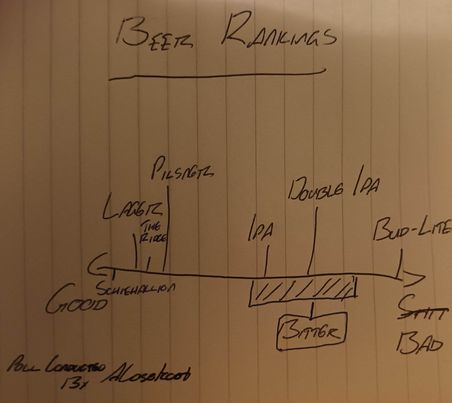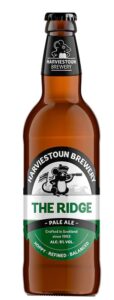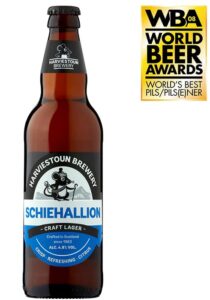Geology and Beer or How a good story is always within reach

I won’t lie, I like a craft beer every now and again. Don’t get me wrong I’m not a snob. All I really know is lager = good, IPA = bitter. But I have noticed that I do tend to be losing a lot of my money to beers that have geologically relevant names. And they’re not always good – in fact a lot of them suck.
There are a few articles around which talk about the massive impact geology has on the taste of beer and while I’m sure it does have a mild influence, in today’s world of craft beers with more additives than there are elements and more flavours than there are living prime ministers, I imagine that effect is probably pretty inoffensive. If you haven’t already used up all 4 of your free articles from Forbes they have this one which does its best to convince you of the importance of geology in beer, up until the last sentence where it admits that it’s basically irrelevant now.
What really gets my attention though is a beer with a story. And my two favourites are in fact those with geologically relevant names so, while my optimism may be misplaced, I have been right before. They’re both made by Harviestoun brewery in Alva.

The 2nd best is called ‘The Ridge’, named after the mid-Atlantic ridge. On Harviestoun’s website they describe it like this:
“The Mid-Atlantic Ridge is where two titans collide, the mighty America and the even mightier Scotland.
This beer combines ingredients from both countries to create an earth-shattering combination. All thanks to the seismic talents of our master brewers.”
Geologically of course, this could not be more wrong. The mid-Atlantic ridge is by its definition not somewhere where anything collides however, the beer itself tastes amazing.
Interestingly the discovery of the mid-Atlantic ridge and the entire system of ridges underneath the earths oceans helped influence the discovery of continental drift which, fundamentally changed our understanding of the earth’s geology.

My favourite beer though, is called Schiehallion. Named after the mountain in Ullapool it is often referred to as ‘the champagne of lagers’. While this is a bit self-aggrandising it is a fantastic beer, but it is a story about the mountain itself that really fascinates me:
In 1774 Charles Hutton was the assistant to Nevil Maskelyne when he accepted a commission to try and prove Newton’s theory that all matter, every atom, had its own gravity.
In order to prove this they hypothesized that a mountain would be large enough to have a noticeable gravitational field. It didn’t have to be a huge mountain either, though the effect would of course have been more pronounced near those found in the Himalayas and the Peruvian Andes. Next ton one of these gienats the deflection of a plumb line (a line of cord with a weight at the end) can exceed 1 minute of arc (equivalent to more than 1800 m on the ground).
Schiehallion is only 1,083 m tall so the deflection was nowhere near that significant but it was still pronounced enough to allow Hutton and Maskelyne to perform their experiment. They using the deflection of a plumb line and the mass of the mountain to get a rough estimate of the Earth’s density , from which they were able to deduce a value for the mass of the Earth (~20% less than the currently accepted value) and a value for Isaac Newton’s gravitational constant. Newton’s laws are still some of our best explanations for the process at work in our universe and the fact that they could prove this in 1774 with just a piece of string, a weight, a mountain and some maths is something I will never not be in admiration of.
In conclusion, i like beers which have something to tell you, and while not all those claiming geological credentials have them, sometimes there’s a really interesting story just waiting for you on the label of the next bottle.
Danson, E., 2009. Weighing the world: The quest to measure the Earth. Oxford University Press.




Recent comments